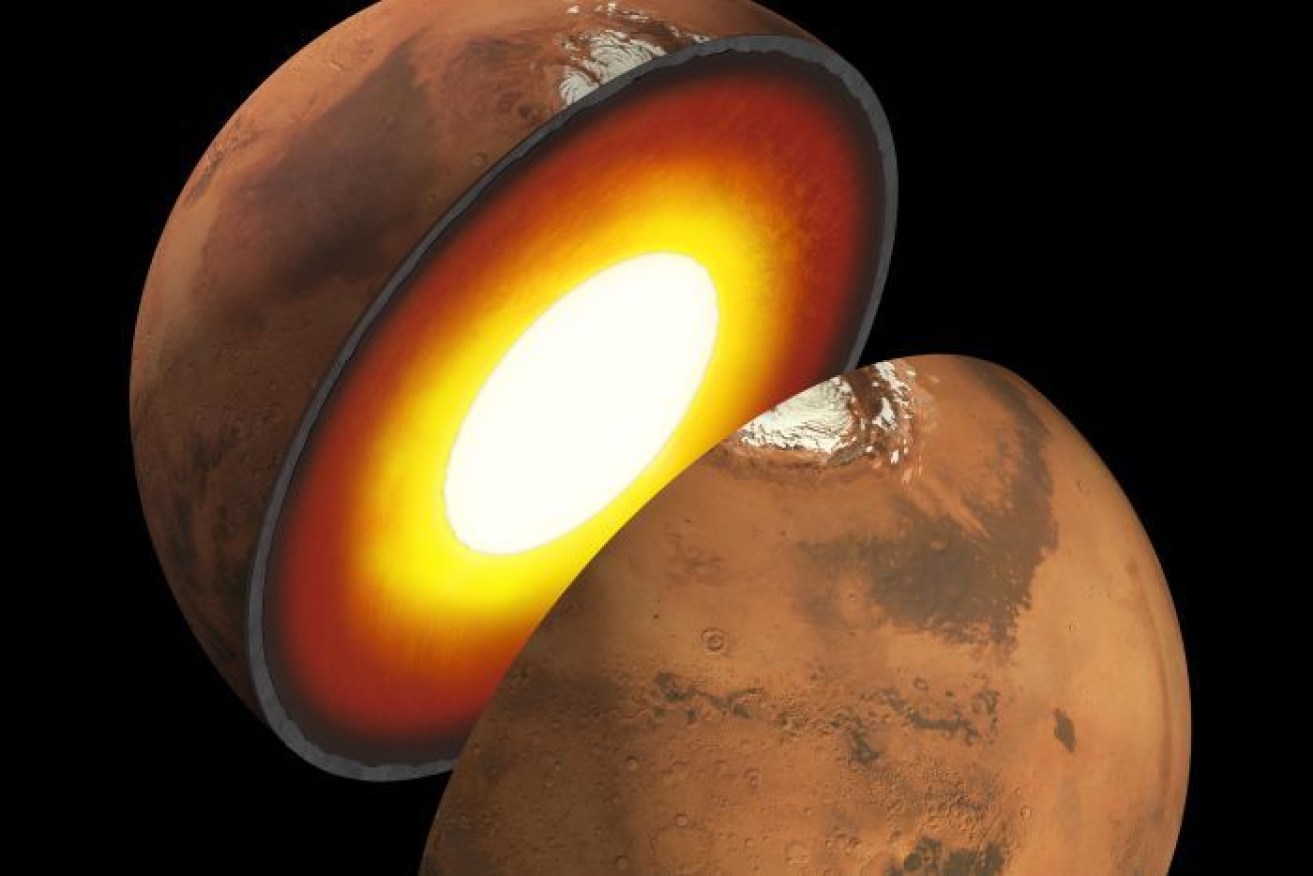Scientists waiting on a ‘marsquake’ to reveal hidden secrets

Artist rendition of what the interior of Mars may look like. Photo: NASA
Scientists are hoping an upcoming journey to Mars will reveal what’s under the surface of the Red Planet.
But they will not be mining to the core, instead they plan to wait for an asteroid to smash into the surface of Mars causing an earthquake – or more accurately, a marsquake.
The InSight (Interior exploration using Seismic Investigations, Geodesy and Heat Transport) spacecraft will be a stationary lander mission that measures the seismic activity.
The goal is to understand the formation and evolution of Mars.
Curtin University scientist, Katarina Miljkovic, is working with NASA to analyse the data that gets sent back and explained that due to Mar’s thinner atmosphere, unlike Earth, not everything burns up when passing by.
“So when we look at the Earth we often see fireballs or shooting stars occurring in the atmosphere and those are space rocks burning up in the atmosphere,” she said.
“On Mars the atmosphere is much thinner, so when we have these meteorites passing through the atmosphere on Mars they may not necessarily burn up in the Martian atmosphere.
“We’d expect to see a shooting star but also an impact on the ground.”
It is those impacts on the ground that Ms Miljkovic will be using to read what is under the surface.
“They cause a seismic shaking and they cause some form of quake,” she said.
“It’s similar to the earthquakes, although on the Earth we mostly get tectonic quakes, but on Mars we’d expect to see more quakes caused by impacts.”
Ms Miljkovic said every seismic wave behaved differently to different materials, which helps scientists discover a range of things about Mars.
“That can tell us how thick was the crust, what were the physical properties of the crust, whether we reached the mantle and what are the properties,” she said.
So it’s basically giving us direct information on the structure of the interior.”
Despite the interest in Mars as a future home for humanity, little is known about the make-up of the planet.
Ms Miljkovic said the InSight lander should delve deep into what the planet is made of.
“We know a little bit about the crust but we don’t know a lot about the deep interior,” she said. “We don’t know details about the crust and there’s a lot of uncertainty that comes along with the knowledge that we know so far.
“So we’re really trying to get new depths of knowledge through InSight because this is the first time we’re doing something like this.”
The mission blasts off next month, and NASA hopes to land the spacecraft on Mars by November.
Five years on Mars
NASA’s Curiosity rover has already taught us a lot, but scientists say there’s more to come.
Professor Jonti Horner said the history of missions to Mars was well-stocked with failure.
“It’s remarkable how difficult it’s been historically to get to Mars in the first place,” he said. “I think for all missions to Mars we’re talking a 50 per cent success rate, so a lot of missions have gone wrong.
“We’ve got better at it, but we should always keep at the back of minds that space flight isn’t certain, it’s still challenging.”
Despite this, Professor Horner hopes the mission is able to reveal how Mars was created.
“What we’re doing as astronomers is sitting at the scene of a crime four-and-a-half-thousand-million years after it happened,” he said.
“The planet’s formed, and we’re now picking up the pieces looking at the clues trying to piece that process together.”








